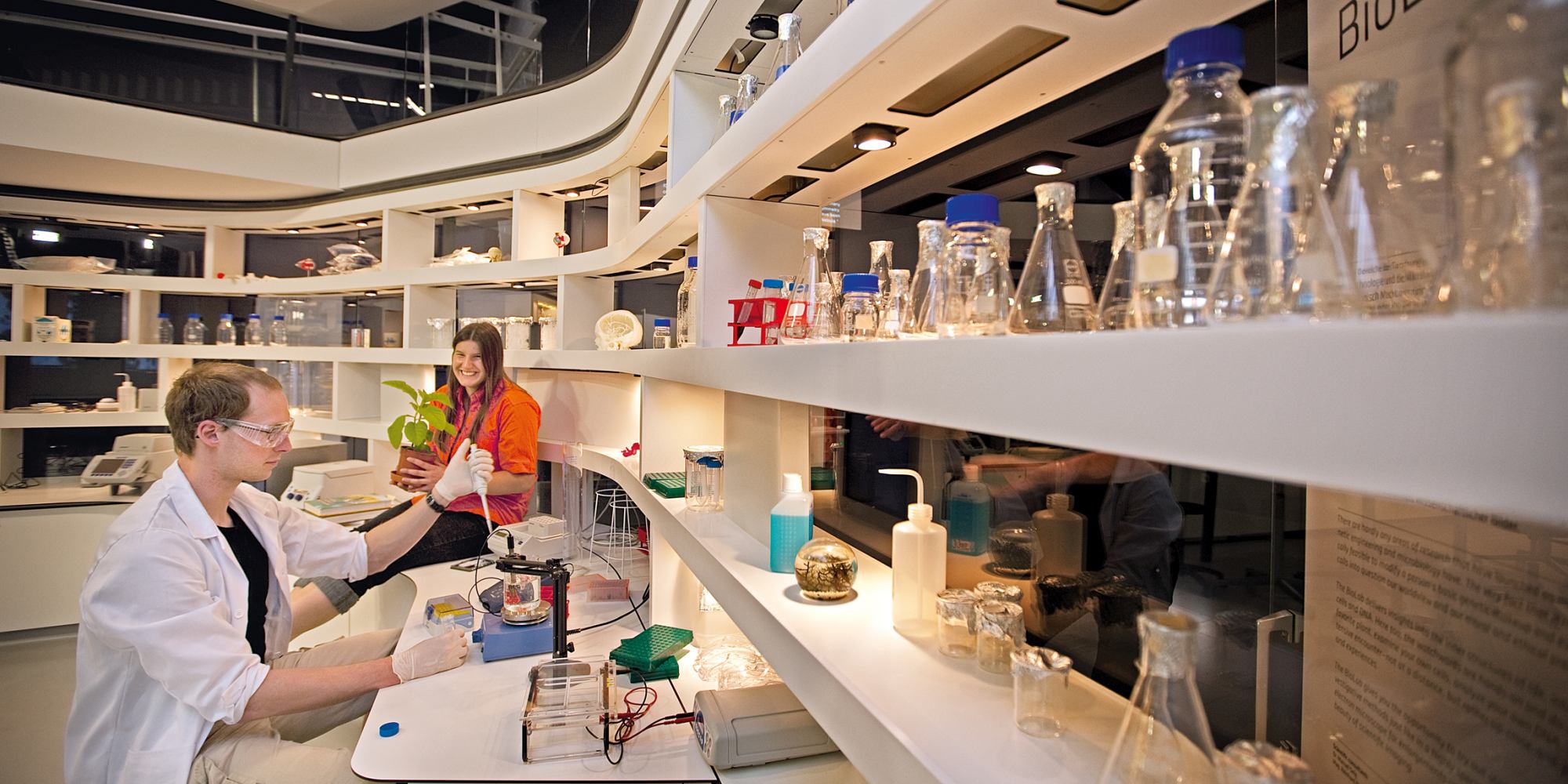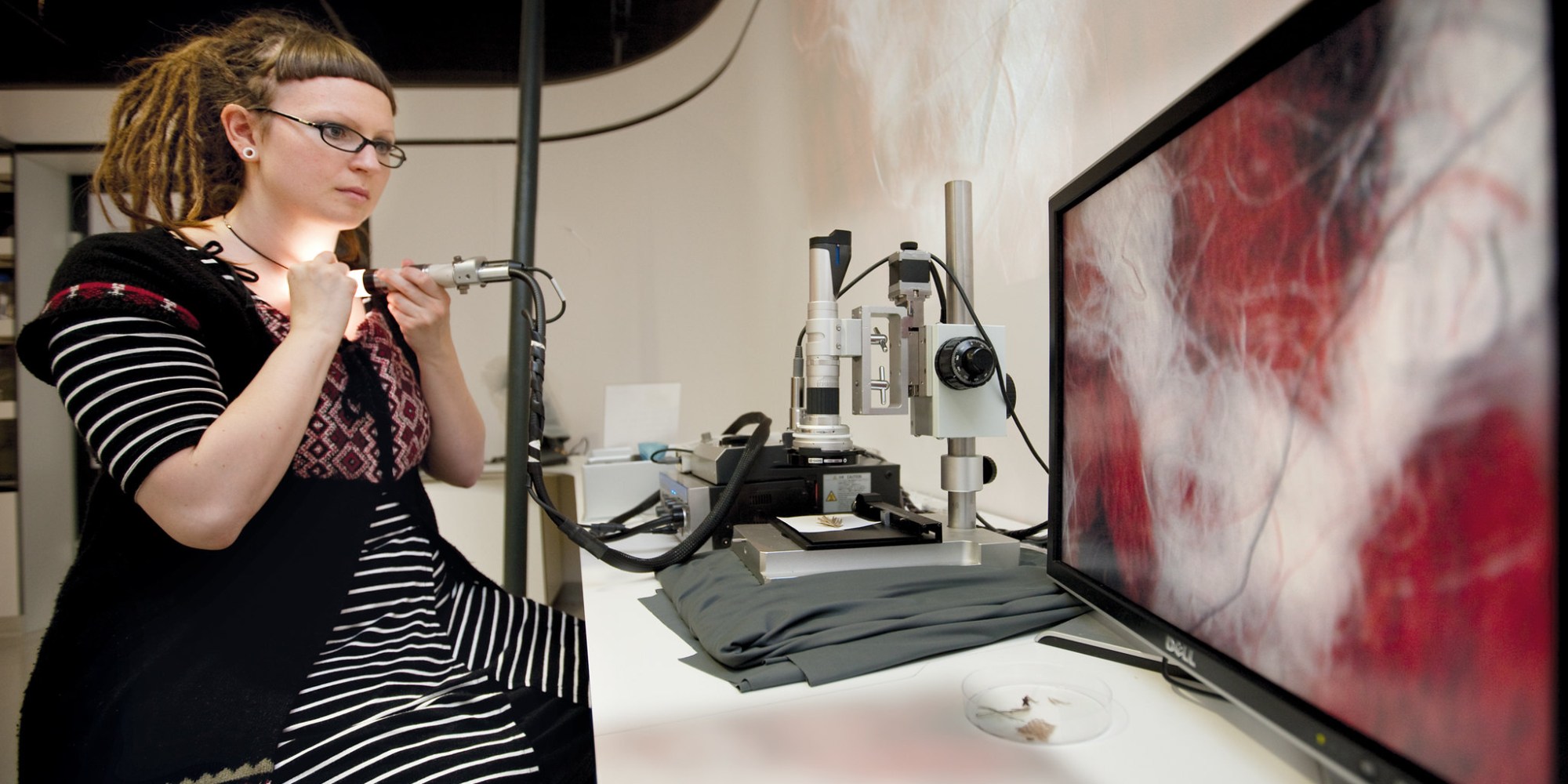The heart piece of the first main exhibition “New Views of Humankind” in 2009 was constituted by four public accessible labs.
The BioLab was a wet lab for hands-on experience with state-of-the-art lab equipment amidst cloned plants. The BrainLab made visitors aware of how humans perceive their environment and all that their brain leads them to believe as they do. The FabLabfocused on making computer aided design and fabrication accessible for users and spans from interactive installations for intuitive first experiences to custom designed software for easy access to fabrication tools. Finally, the RoboLab, where contributions from the spheres of art, design and research demonstrated how robots and humans already live together and interact.
The background to the founding of the BioLab was major progress in the fields of genetic engineering and microbiology and the resulting discussions in society. The fact that it is becoming technically feasible to change the genetic basis of human beings or even to clone them calls into question our view of the world and our moral and ethical ideas.
The BioLab at the Ars Electronica Center provides insight to the inner structure of life, the structure of cells and DNA. At special workshops, “Hands-on” and “Do-It-Yourself” are important factors: cloning plants, looking at cells, analyzing one’s own DNA. The objective is an intensive analysis – not from the distance but based on immediate experience. The BioLab offers the possibility to try out scientific devices and examination methods like in a specialized laboratory, for instance, a scanning electron microscope with a zoom factor of 20.000. Our visitors discover the fascination and beauty of scientific pictures.

BioLab, an Introduction
What’s to be discovered here? Well, you might start off by venturing into a world that can only be explored with the help of high-tech optics. In the images provided by a reflected light microscope, you can get lost in the dense jungle of your own scalp and marvel at your skin’s structure. Or maybe you’d rather get grossed out by a close-up look at pimples and other blemishes!
Credits
Research & Development: Christopher Lindinger, Florian Bauböck, Irene Posch, Carles Gutiérrez Valles, Gerfried Stocker, Manuel Selg



